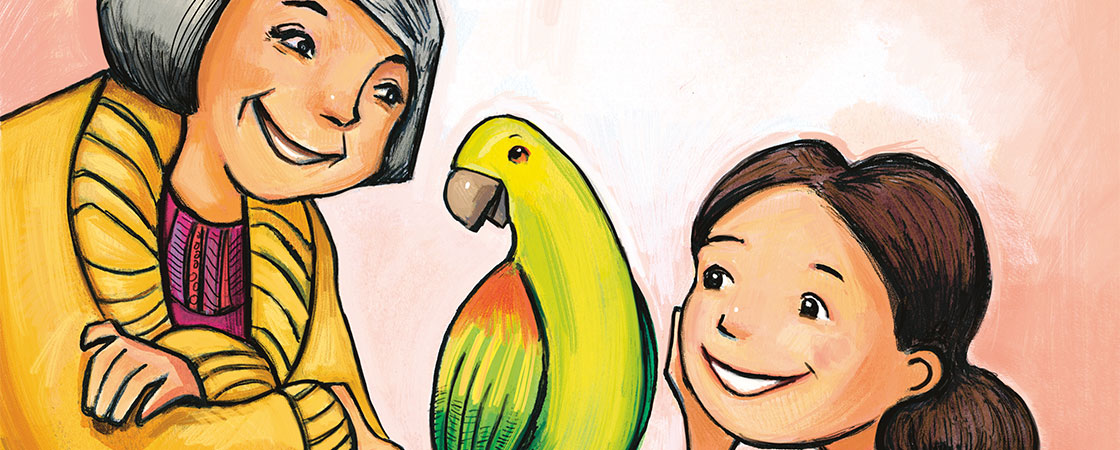She comes to us in winter, leaving behind her sunny house that rested between two snaking rivers.
“Her old place was too much for just one,” Mami tells me as we make room in my dresser for her clothes.
“And too far away for us to help,” Papi adds. “Abuela belongs with us now, Mia.”
But I still feel shy when I meet this faraway grandmother.
¡Pín pán pún!
Papi unfolds Abuela’s bed and slides it right next to mine. “You will get to know each other,” he says.
But when I show Abuela my new book, she can’t unlock the English words. We can only look at the pictures and watch my hamster, Edmund, race on his wheel.
Then, just before we turn out the light, she pulls out two things tucked inside the satin pocket of her suitcase.
A feather—una pluma—from a wild parrot that roosted in her mango trees and a snapshot—una fotografía—of a young man with Papi’s smile.
Tu abuelo, she says, climbing into bed.
Snuggled in my pajamas, I smell flowers in her hair, sugar and cinnamon baked into her skin.
That night, I dream of a red bird circling in the sky.

